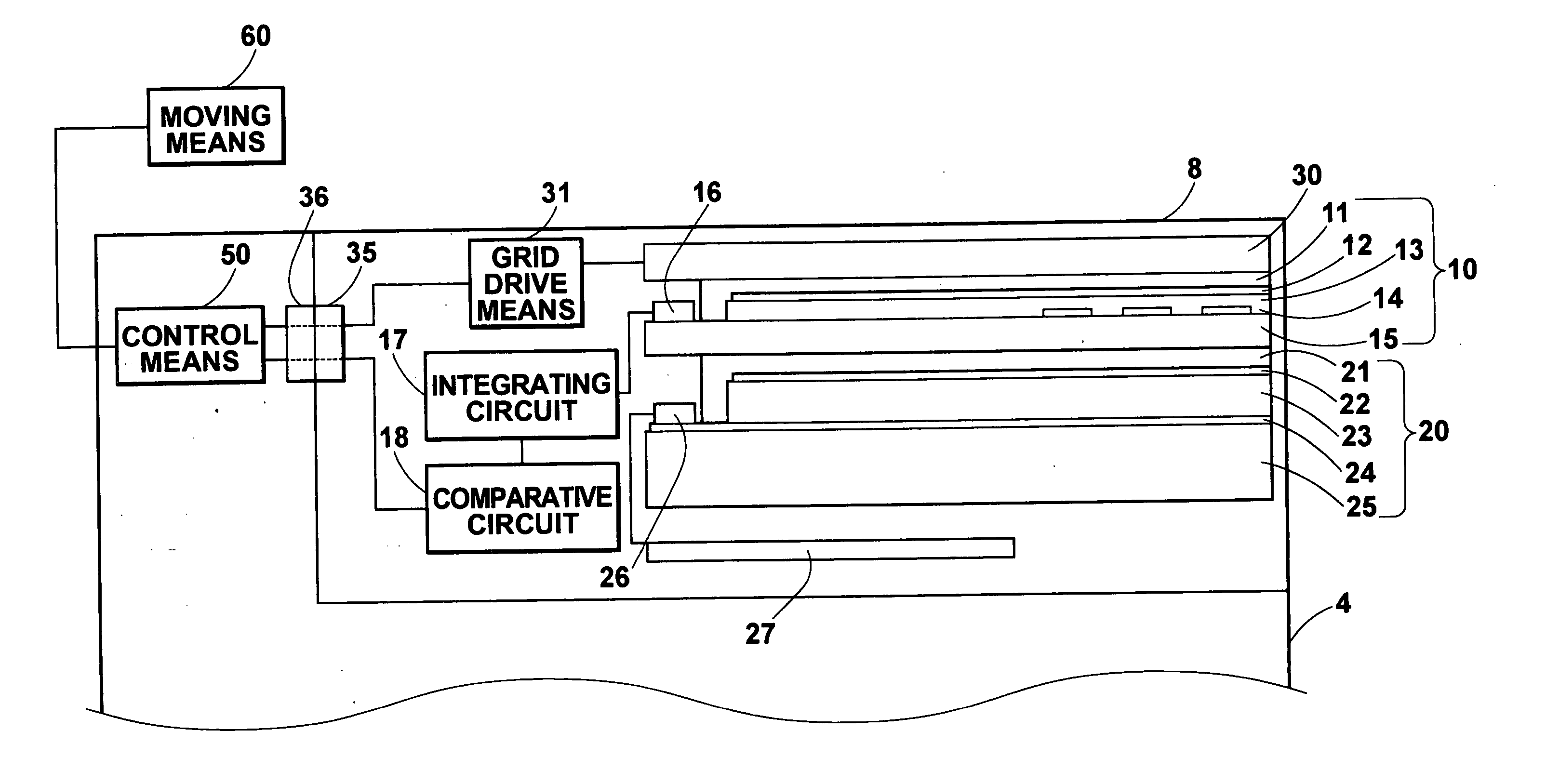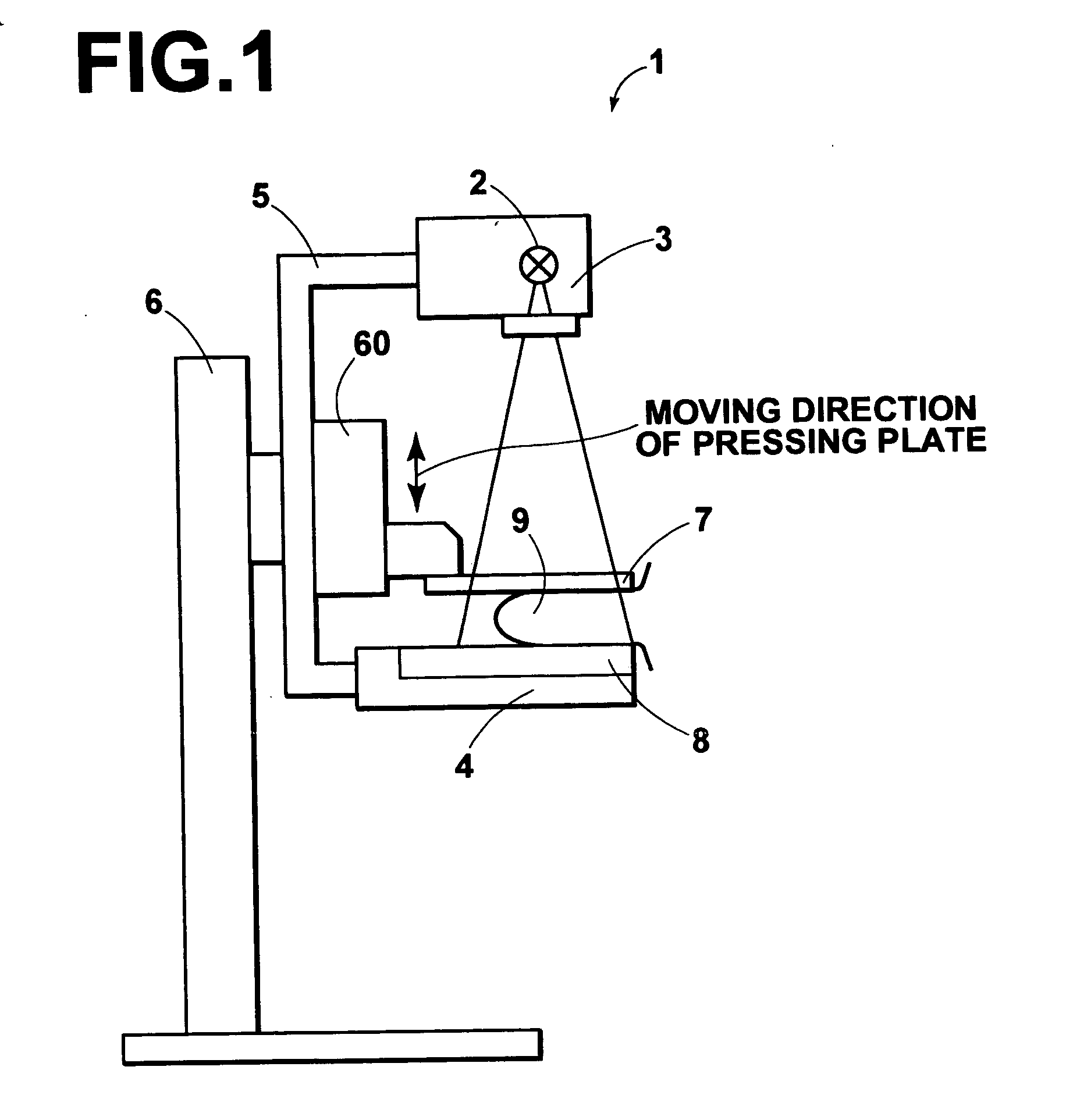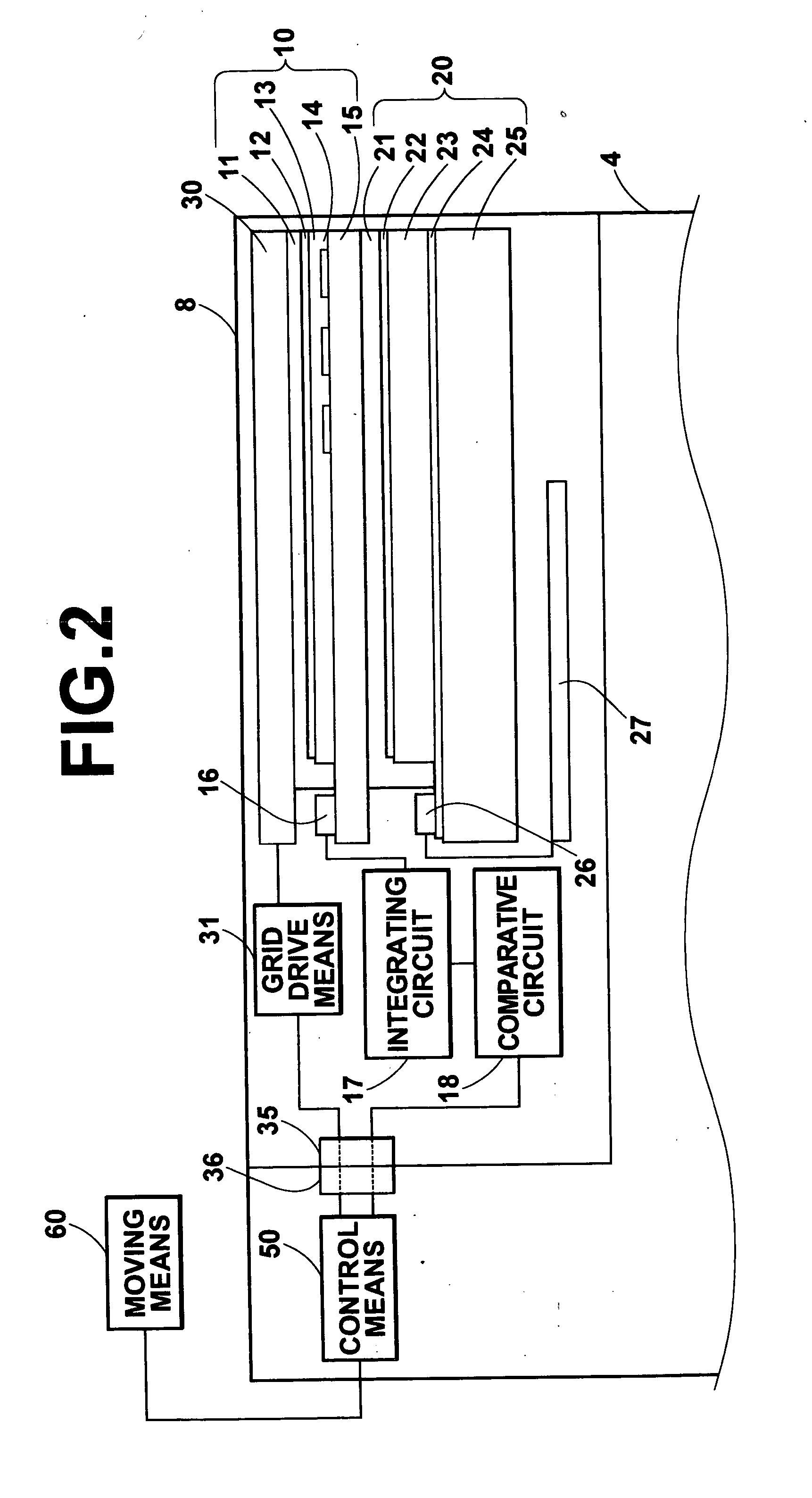Mammography apparatus and detecting unit
- Summary
- Abstract
- Description
- Claims
- Application Information
AI Technical Summary
Benefits of technology
Problems solved by technology
Method used
Image
Examples
Embodiment Construction
[0033] Hereinafter, an embodiment of the present invention will be described in detail with reference to the attached drawings. FIG. 1 is a schematic diagram that illustrates an example of a mammography apparatus according to the present invention. FIG. 2 is a schematic diagram that illustrates the interior of a detecting unit of the mammography apparatus. FIG. 3 is a schematic diagram illustrating a conductive layer portion of an X-ray dosage detector of the mammography apparatus. FIG. 4 is a circuit diagram illustrating an integrating circuit and a comparative circuit of the mammography apparatus.
[0034] A mammography apparatus 1 comprises: an X-ray source housing portion 3 that houses an X-ray source 2 within its interior; an imaging table 4 for holding a detecting unit 8; arms 5; and a base 6. The X-ray source housing portion 3 and the imaging table 4 are linked by the arms 5 so that they face each other. The arms are mounted on the base 6.
[0035] Further, a pressing plate 7, fo...
PUM
 Login to View More
Login to View More Abstract
Description
Claims
Application Information
 Login to View More
Login to View More - R&D
- Intellectual Property
- Life Sciences
- Materials
- Tech Scout
- Unparalleled Data Quality
- Higher Quality Content
- 60% Fewer Hallucinations
Browse by: Latest US Patents, China's latest patents, Technical Efficacy Thesaurus, Application Domain, Technology Topic, Popular Technical Reports.
© 2025 PatSnap. All rights reserved.Legal|Privacy policy|Modern Slavery Act Transparency Statement|Sitemap|About US| Contact US: help@patsnap.com



